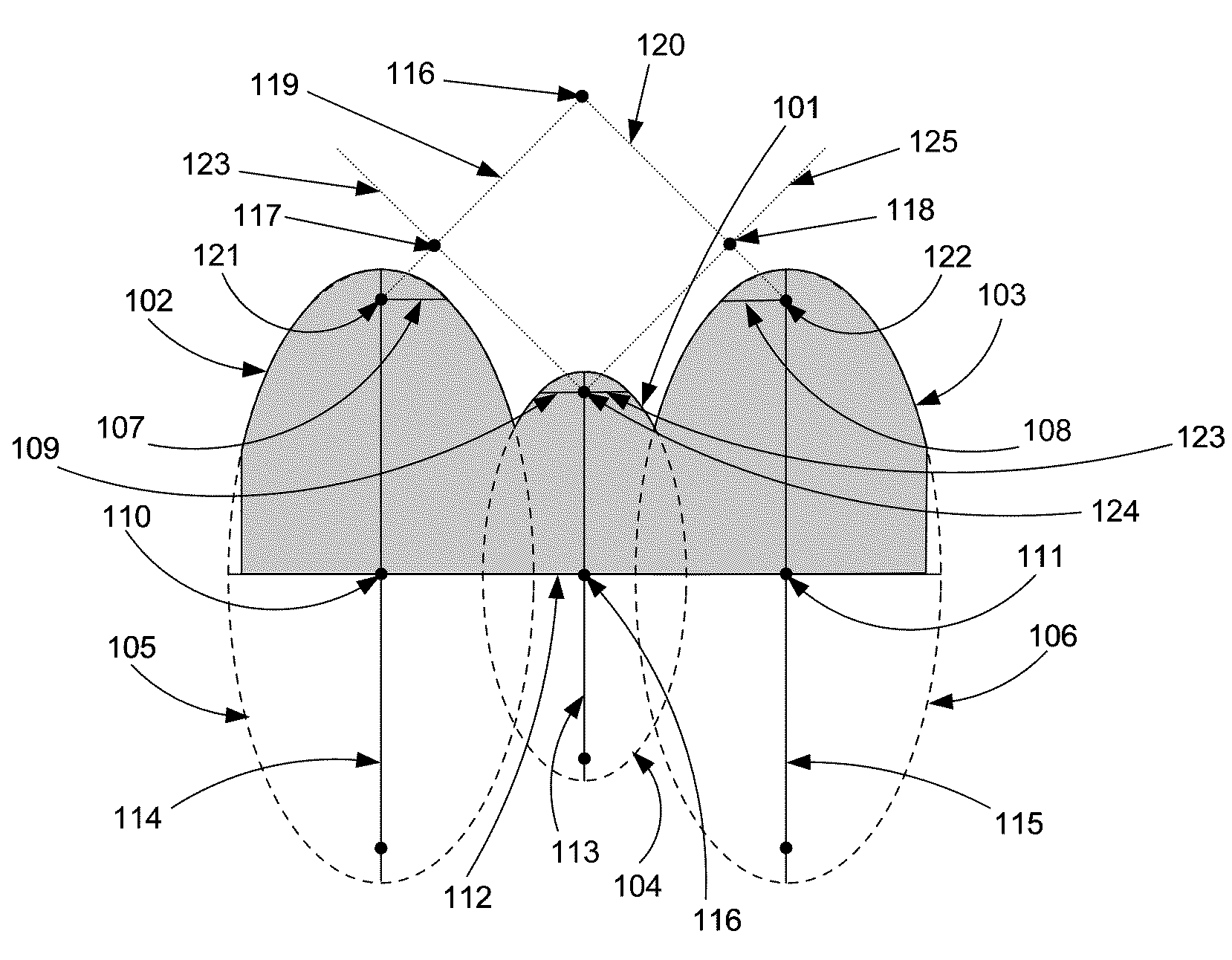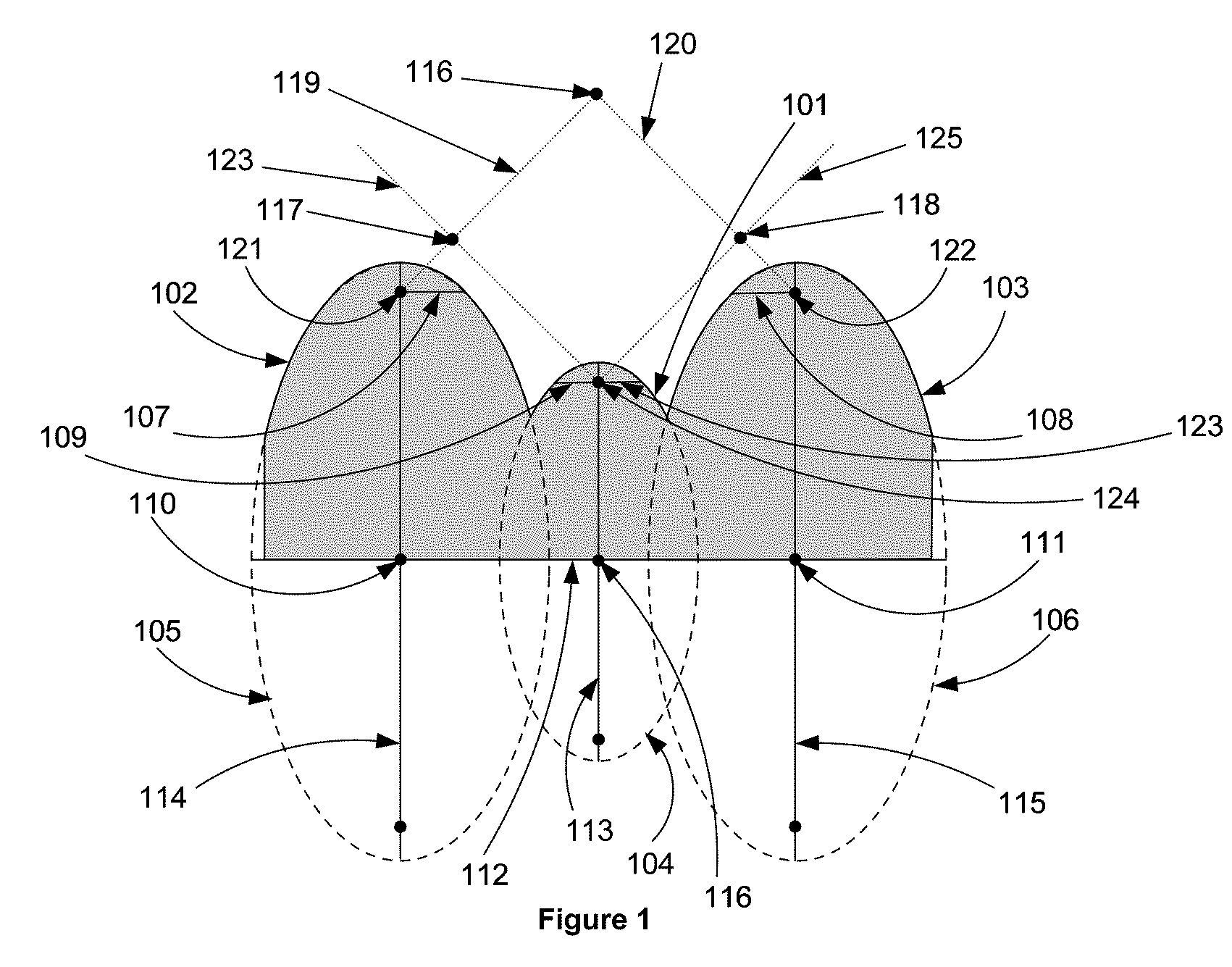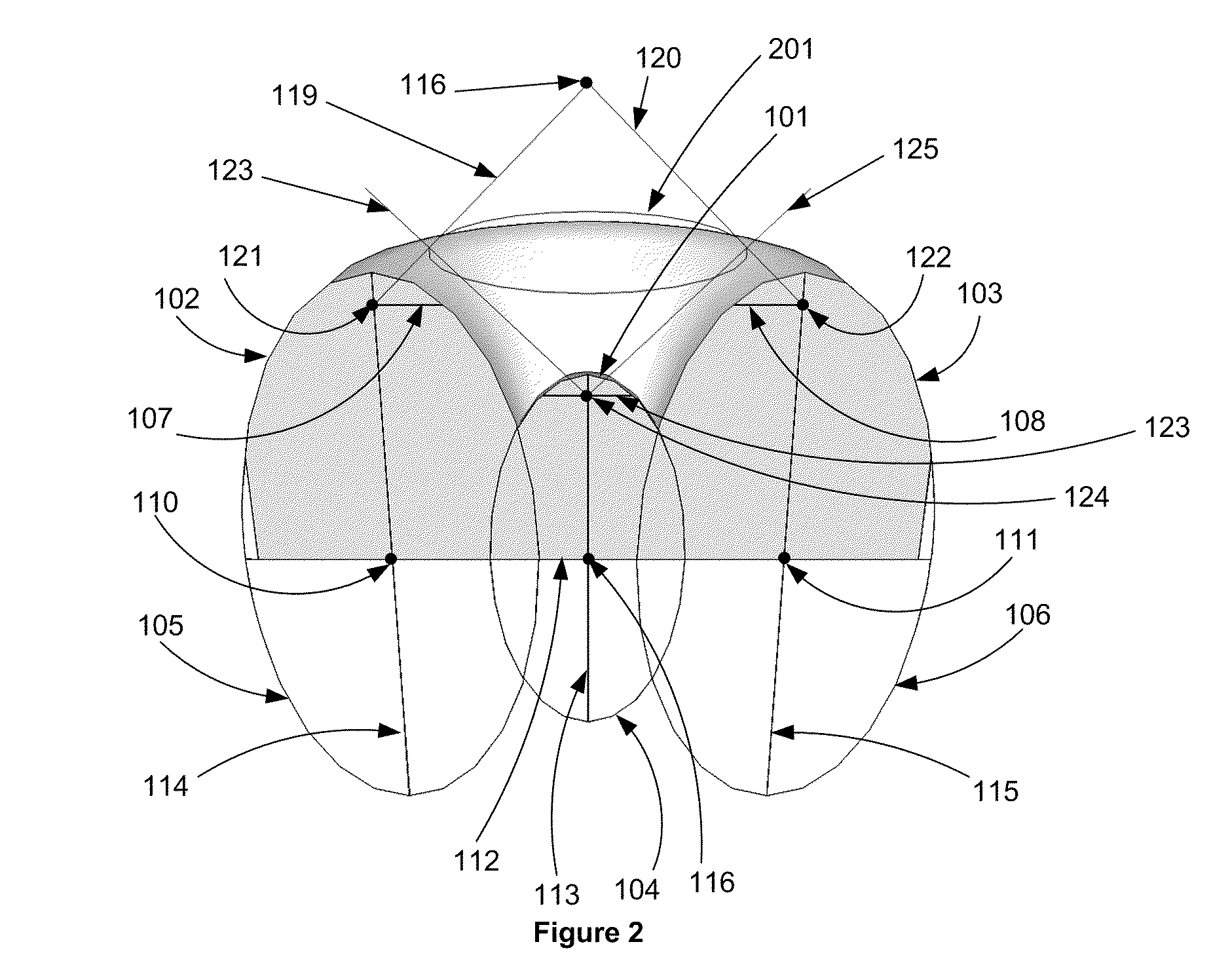Lens for concentrating low frequency ultrasonic energy
- Summary
- Abstract
- Description
- Claims
- Application Information
AI Technical Summary
Benefits of technology
Problems solved by technology
Method used
Image
Examples
Embodiment Construction
[0017]An ultrasonic lens configured according the present invention comprises at least three adjacent convex contours corresponding to the arcs of three ellipses each having a focus, a semi-latus rectum, a center, a major axis, and a minor axis. The contours are adjacent in that each contour shares a common vertex with at least one other contour. Any of the ellipses to which the three contours correspond may also have a second focus.
[0018]Depicted in FIG. 1 is a cross-section of one possible lens configured according to the present invention. As illustrated in FIG. 1, the first or center contour 101 shares a vertex with the second contour 102 and third contour 103. The first contour 101 corresponds to an arc of a first ellipse 104 in that contour 101 is a section of ellipse 104. The second contour 102 and third contour 103 are adjacent to and flank the first contour 101. The contours 102 and 103 correspond to arcs of two symmetrical ellipses, 105 and 106 respectively, having semi-la...
PUM
 Login to View More
Login to View More Abstract
Description
Claims
Application Information
 Login to View More
Login to View More - Generate Ideas
- Intellectual Property
- Life Sciences
- Materials
- Tech Scout
- Unparalleled Data Quality
- Higher Quality Content
- 60% Fewer Hallucinations
Browse by: Latest US Patents, China's latest patents, Technical Efficacy Thesaurus, Application Domain, Technology Topic, Popular Technical Reports.
© 2025 PatSnap. All rights reserved.Legal|Privacy policy|Modern Slavery Act Transparency Statement|Sitemap|About US| Contact US: help@patsnap.com



